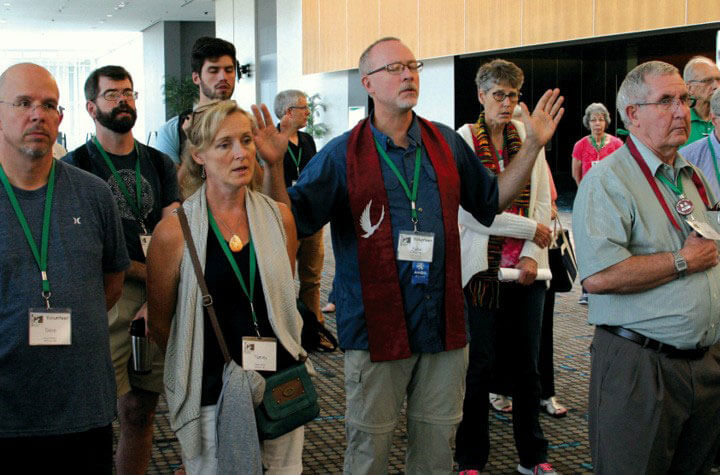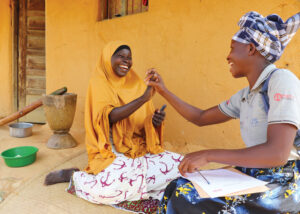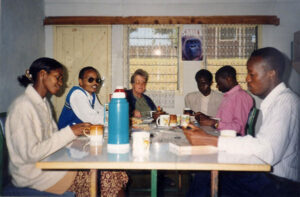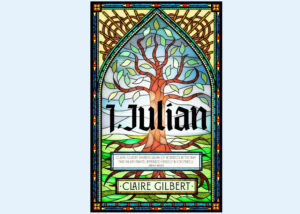Pick a category of people at the Mennonite Church USA convention, and you could identify their pain.
It might have been the pain of exclusion due to sexual orientation. Or of feeling the church has agreed to tolerate sin. It might have been the pain of sexual abuse. Or of concern for the future of a church sharply divided on how to relate to sexual minorities.
“I’ve never been at a convention with so many tears, and I’ve been to quite a few,” said Dorothy Nickel Friesen of Newton, Kan., on July 4, the convention’s last full day.
Friesen, a retired pastor and conference minister, wore an orange arm band that identified her as a “conversation coach” who could help people deal with difficult situations.
She had seen people leaving the delegate hall in tears, “some mourning the move toward inclusion and some the lack of inclusion.”
“People see this as setting the future of the church,” Friesen said. “That’s how high the stakes are.”
The 830 delegates passed two resolutions charting what some saw as a middle-of-the-road course for policies on same-sex relationships.
One resolution reaffirms the denomination’s Membership Guidelines, which uphold traditional marriage and forbid same-sex ceremonies. The other commits to forbear with those whose beliefs and practices on the inclusion of people with same-sex attraction differ from the denomination’s official stance.
The Membership Guidelines resolution got a 60 percent majority and forbearance 72 percent.
Hope for unity?
Some hoped the combination of freedom and accountability offered hope for holding the church together.
“Voting for both was, for me, a way of trying to keep the broader perspectives that we so desperately need,” said Tim Detweiler of Washington, Iowa. “To force unity one way or another is to create a more one-sided church.”
Others saw an impasse that satisfied no one. “I think we are now officially stuck,” said Larry Diener of Souderton, Pa. “We used to be just stuck.”
Diener voted only for the Membership Guidelines resolution because he believes its stance on same-sex marriage is biblical. “I believe homosexuality is a moral issue, not primarily a justice issue,” he said. “We have reaffirmed our theological position, and I am glad for that. But we have made it officially OK for individuals and congregations and conferences to be at variance. I’m disappointed in that.”
Dennis Schmidt of Pandora, Ohio, doubted that any problems were solved. “I don’t think we made progress on anything,” he said. “I think we succeeded in angering a minority, and the churches that are thinking about leaving will leave anyway.
“I think inclusivity is coming, no matter what, and we as a church did not make progress toward what I feel is Jesus’ command to include all people.”
Andrea Zuercher of Lawrence, Kan., who supports inclusion of lesbian, gay, bisexual and transgender people in the church, voted only for forbearance. “We need the time and space to listen to each other, and forbearance does that, but the Membership Guidelines would knock the meaning of that away,” she said.
Jeff Linthicum of Berne, Ind., voted against both resolutions. The congregation he pastors, First Mennonite Church in Berne, is looking for an affiliation other than MC USA. “I think our guidelines should represent what we do in practice,” he said. “I felt the church should not approve both, because that felt contradictory to me. After forbearance passed, how could I vote for the Membership Guidelines? It’s not being honest.”
Delegates passed other resolutions, including ones against “endless war” and sexual abuse. They tabled a resolution that called for divesting from companies that profit from the Israeli occupation of Palestine but later passed a statement committing to further study of Israel-Palestine justice issues.
Pain shown openly
Supporters of LGBT inclusion showed their pain and frustration openly. On July 2, about half a dozen supporters of the LGBT advocacy group Pink Menno took the stage in the delegate hall and attempted to perform a satirical drama. Several delegates shouted their opposition, and moderator Elizabeth Soto Albrecht repeatedly asked the activists to leave.
Two days later, family members of LGBT people were given five minutes to speak to delegates but were cut off when they exceeded the allotted time, prompting shouts asking that they be allowed to continue.
Outside the delegate hall, Pink Menno led daily hymn sings, the last of which drew several hundred people.
Singing symbolized healing for a different kind of pain during “A Service of Lament and Hope for Sexual Abuse” July 3 at Grace and Holy Trinity Cathedral.
The gentle voice of Chuck Neufeld resounded through the ornate, stone-walled sanctuary: “Here we are, and we’ve been gathered, and the truth has gathered too.” Hundreds of worshipers confessed the church’s failures and declared solidarity with survivors of abuse.
‘On the Way’
Convention attendance was 4,680—matching Phoenix two years ago as the smallest of the seven MC USA conventions since 2003. The youth convention accounted for 2,371 of the participants.
In combined youth and adult services to open and close the convention, worshipers sang hymns without accompaniment and contemporary songs with guitars and drums. Hands were raised in praise, youth jumped up and down in front of the stage, and beach balls bounced among the crowd.
In worship services throughout the week, the adults heard messages on the Emmaus road story from Luke 24. Two disciples encounter the risen Christ but fail to recognize him until just before he departs. The conference theme, “On the Way,” reflected the Emmaus experience of discovering Jesus on a journey.
In a contemplative worship service that drew about 150 people on Saturday evening as the conference drew to a close, Samuel Voth Schrag, pastor of St. Louis Mennonite Fellowship, spoke of the pain he had seen.
“We’ve caused wounds this week,” he said. “With each resolution we passed or didn’t pass, we have grieved each other deeply.”
Schrag noted that in Luke 24, when the disciples wondered if the man who had appeared to them was truly the risen Christ, he showed them his wounds, the signs of his pain.
“You can recognize Jesus among us when you see the wounded hands and feet in our midst,” he said. “When you see pain, you see Jesus.”
This story appeared originally in Mennonite World Review. Used with permission.








Leave a Reply
You must be logged in to post a comment.